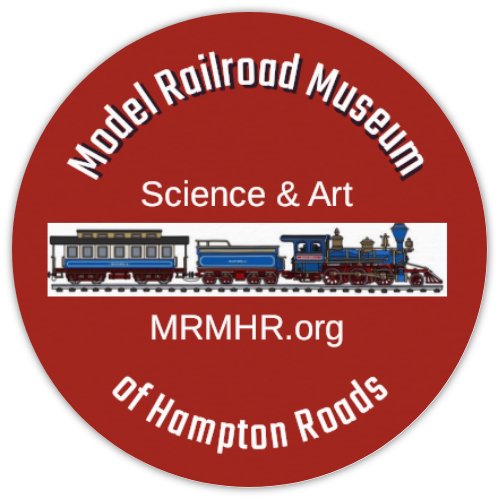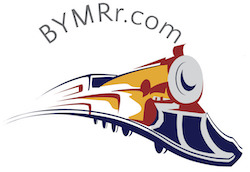Making Tracks
July 2024
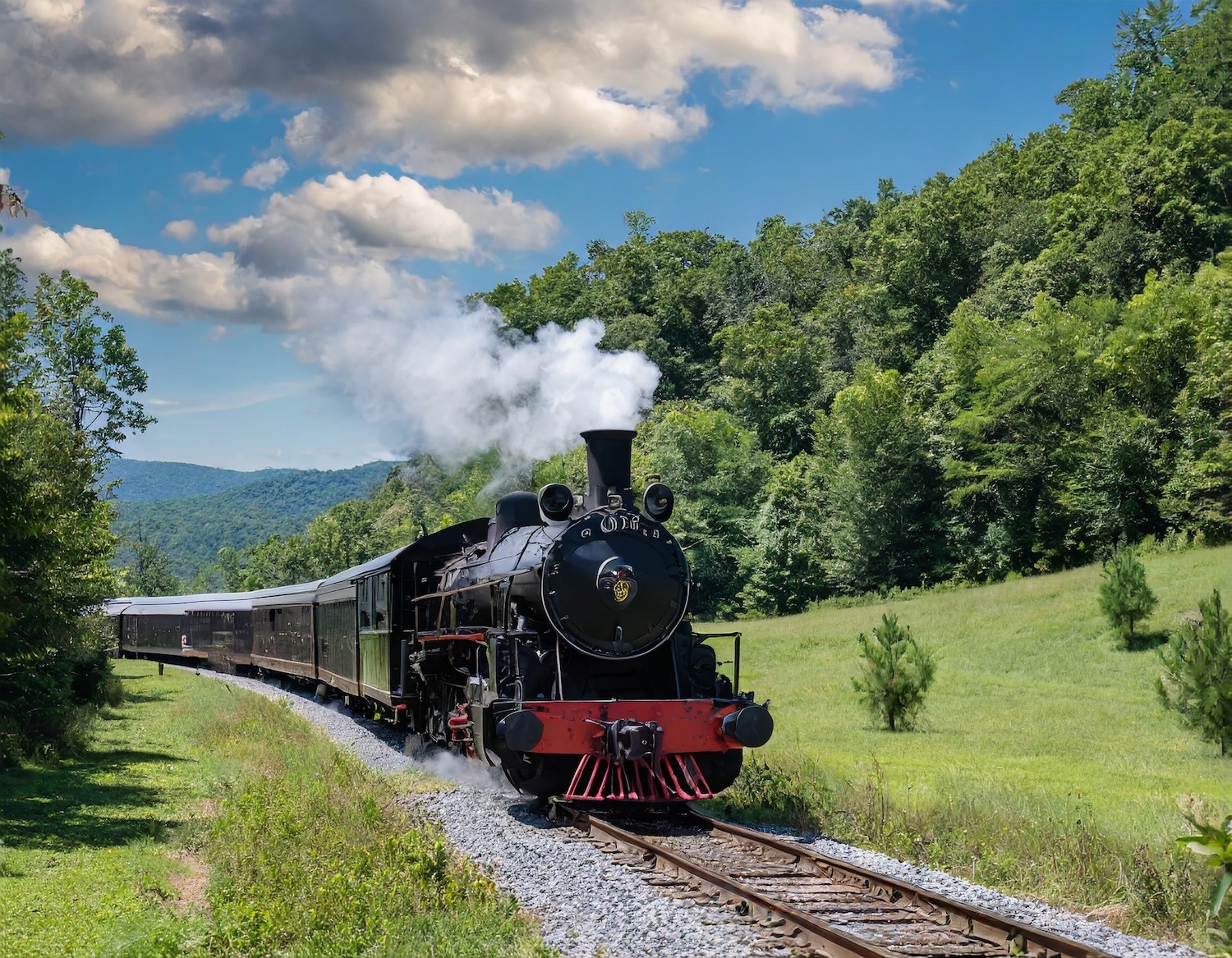 Steam train in the Summer in the Appalachian Mountains - by Adobe Firefly
Steam train in the Summer in the Appalachian Mountains - by Adobe FireflyMaking Tracks July 2024
Contents:
- Birth of Virginia Beach, Part 12, by Warren Leister
- Wooden Track Trains, by Dave Pecota
This issue of Making Tracks July 2024 contains interesting historical information on the origin of Hampton Roads and particularly of Virginia Beach, including some of the charismatic and colorful people involved. Once this series is complete, it will be published as a book, which you may consider putting in your library or, even better, on your living room coffee table. The second article involves the history of wooden toy trains, which I am sure occupied some of your time as a youngster, and, after reading this story, arouses a certain degree of nostalgia in all of us.
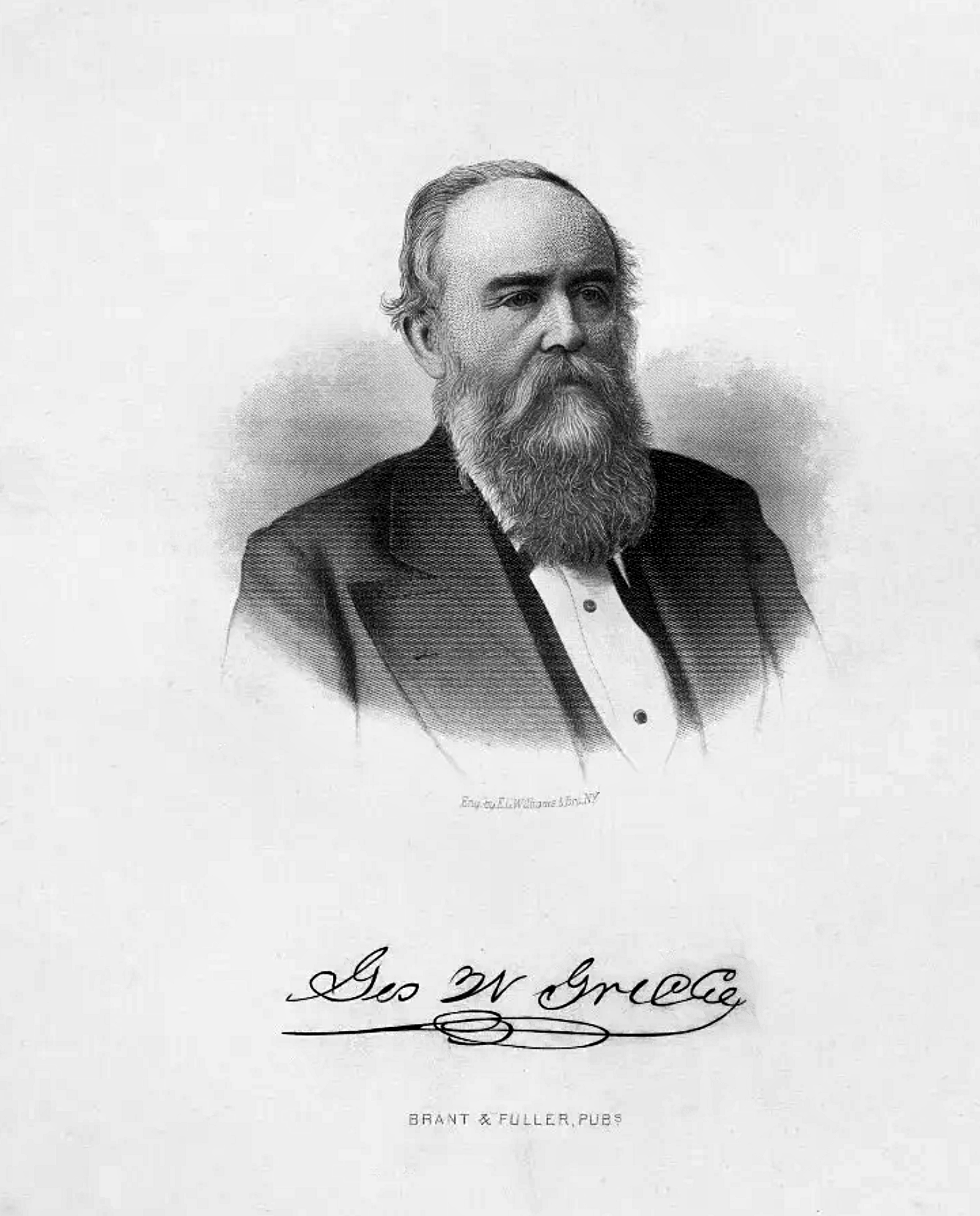 George Washington Grice
George Washington GriceBirth of Virginia Beach - Part 12:
A Marshall Parks Jr.'s contemporary, and an accomplished Portsmouth native, George W. Grice was a natural born leader who stood apart, but suffered a sudden and untimely end.
By Historian Warren Leister
{Author's notes are in brackets and italics}
A Continuing Series: Part 12 - Exclusively Written for Making Tracks July 2024:
The Raleigh and Gaston Railroad was North Carolina's second oldest railroad opening only one month after the Wilmington and Weldon Railroad. The Raleigh and Gaston Railroad controlled the Raleigh and Augusta Air Line Railroad, owning most of its stock. Later, both the Raleigh & Gaston and Raleigh & Augusta fell on hard times during the economic Panic of 1873, and John M. Robinson, president of the Seaboard and Roanoke Railroad, acquired financial control of both carriers, becoming president of all three railroads in 1875.
From the Raleigh Weekly News dated October 6, 1875 titled "THE NEW PRESIDENT OF THE R&G R. R. {Raleigh and Gaston Railroad, construction began in 1836 and opened for service in April 1840. It was the first railroad in North Carolina to use steam locomotives, and not horses} ," "Maj. George W. Grice was born in Portsmouth, Va., in 1825. His early education was conducted at Elizabeth City, N. C., and one of his preceptors {teachers} there was E. W. Stanton, afterwards the celebrated Secretary of War under the Lincoln administration. He was for four years Mayor of Portsmouth, and has represented Princess Anne, Norfolk county, and city of Portsmouth in the Senate of Virginia."
He was President of the Union Car Works at Portsmouth, and as such furnished the equipment for the W., C. & R. R. R. {Wilmington, Charlotte & Rutherford Railroad and many other railroads} In 1867, he founded the Bank of Portsmouth, of which he remained President until his recent election to the Presidency of the Railroad on the 29th. ..."
"At the time of his recent election he was President of six different corporations, which is an evidence not only of his high personal character, but of his distinguished executive ability. …"
In both the Alexandria Gazette on November 8, 1875 and in the Abington Virginian on November 12, 1875, it is reported that Virginia Governor Kemper appointed Marshall Jr. as a delegate among others to represent the commonwealth of Virginia at two national railroad related conventions. The first is related to the building of a railroad {later to become a component of the Southern Pacific Railroad} through states and territories of the Southwest U. S. in St Louis, Mo. and the second one is relative to the expansion of the existing Texas and Pacific railroad originally chartered in 1871 in Memphis, Tn. This further cements Marshall Jr.’s reputation as a key national transportation leader.
From the Norfolk Landmark dated November 13, 1875 on page 4 first column "OBITUARY. Sudden Death of Major George W. Grice. One of our best, most useful and eminent citizens is dead. The sudden and unexpected death of Major George W. Grice has enshrouded our city in the gloom of deepest sorrow. A public spirited man, a benefactor of the poor, an idol of the household, an upright Christian has been stricken down in the very midst of life and usefulness! Strange and mysterious, indeed, are the ways of Providence.”
“On Thursday evening he arrived here by the express train of the Seaboard and Roanoke Railroad from Raleigh, North Carolina, in perfect health, only complaining of a little headache as usual after traveling. After supper he visited Mr. E. G. Ghio, Superintendent of the Seaboard and Roanoke Railroad, for an hour and a half, talking about railroad affairs. He returned home about 10:30 o'clock p. m., and while about retiring and in a lively conversation with his wife, remembered that he had neglected to shut off the gas in the passage and requested her to do it for him. She left the chamber on this mission, and when she returned she found him lying across the bed almost speechless. All he could say was ‘‘My head, my head,” and expired at 1:30 o’clock a. m. He had left Raleigh for Philadelphia, to attend to business connected with the Raleigh and Gaston and Augusta Air-Line Railroads, of which corporations he had been so recently {been} elected President, and only stopped at home to see his wife and sick child. He was attended through his dying moments by Drs. G. W. O. Maupin {Sr.} and G. W. O. Maupin, Jr., and died surrounded by his household and a few intimate friends. The immediate cause of his death was congestion of the brain, superinduced by excessive mental labor." {according to Dr. Greg Warth an MD of internal medicine who retired in early May, 2024, "Major Grice probably died of a subarachnoid hemorrhage. This was likely caused by a cerebral aneurysm that burst at the base of his brain. I have heard this story many times over the years. Some people are born with cerebral aneurysms and don’t ever know they have them. The story is usually as follows: Severe headache, the worst ever, in a healthy, relatively young or middle-aged person followed quickly by death. Not everyone dies depending on the severity of the hemorrhage. We know about it these days because if the person lives long enough to get to the ER, we can see it on a CT scan.” Back then of course they didn’t have such technology.}
"George Washington Grice was born in the residence now occupied by Colonel William White, on the corner of North and Crawford streets, in this city {Norfolk} on May 17th, 1824, and consequently was aged 51 years, 5 months and 25 days. He was educated in Portsmouth, and before he arrived at the age of 21 commenced business by opening a grocery store on Market square. He conducted this business successfully for six or seven years, when he formed a co-partnership with Sunrue M. Wilson, Esq , for the purpose of conducting the commission and wholesale grocery business. This firm owned the brig St. Julien, which was constructed in this city and lost at sea on her first voyage.”
“On the 18th of October, 1850, he married Miss Maggie Edwards, sister of JC. P. Edwards, Esq , of Norfolk county. She died in 1864; at Oxford, N. C., in 1866 he married Miss Hennie S. Harding, of Norfolk, who survives him. He leaves two small boys, aged about six and three and a half years. On being elected President of the Merchants’ and Mechanics’ Savings Bank in 1851, he retired from the mercantile business and devoted all his energies in conducting that institution and the Union Car Works, of which corporation he was chief from the organization to his death. He was Mayor of Portsmouth for three terms-1858, 1859 and 1860. ..."
{During the Civil War, Grice served the Confederacy and reached the rank of Major and as was common in those days that honorary title was used in regard to him for the rest of his life, even though he was President of seven things at the time of this death or recently before.}
"At the close of the war he returned to Portsmouth and at once commenced to rebuild his fortunes. He re-established the Union Car Works and Manufacturing Company, and in 1867 founded the Bank of Portsmouth, of which he was President until the 29th of September, 1875, when he resigned to accept the Presidency of the Raleigh and Gaston and Augusta Air-Line Railroad Companies. He served as President of these corporations just one month and fourteen days.... He was also a member of the Board of Directors of the Seaboard and Roanoke Railroad, ... He was the first President of the Vue de L'Eau Hotel Company, and that delightful seaside resort was constructed under his supervision." {Marshall Jr. was a partner with him in this hotel at the time it was built}
"As a public officer he was prompt, fearless and efficient. As a business man, he had few superiors. In all the relations of life, public and private, social and domestic, he had few peers."
"Yesterday the building of the
Bank of Portsmouth, the upper and lower depots and the engines of the Seaboard
and Roanoke Railroad were heavily draped {with
suitable decorations} in mourning, and many vessels in the harbor, both
foreign and American, had their flags at half-mast through respect to his
memory." {A good number of
organizations he was involved in passed resolutions of respect at his passing
and many of those filled the newspapers; and a good number of newspapers in and
out of Hampton Roads also published separate tributes and noted his passing.}
End of Part 12
This concludes “Birth of Virginia Beach Part 12.” The next installment,
Part 13, will be published in August, 2024.hhh
Wooden Track Trains - a Short History
By Dave Pecota
Exclusively Written for Making Tracks July 2024.
Transportation-related toys have been a mainstay of children’s play for ages. Whether playing with toy trains, boats, airplanes, automobiles or spaceships, the adventure and excitement of travel ignites the imagination. One of the most enduring categories of these transportation toys are the wooden track trains. It is likely that most of us have experienced playing with these toy trains at some time in our lives, either as a child or a parent (or both).
The toys are commonly referred to as “BRIO-compatible trains”, for the Swedish toy company most associated with this toy genre’. One would naturally assume then, that BRIO introduced these trains to the toy world. But you would be wrong … by a couple decades and thousands of miles. We must actually attribute the origin of these trains to two ingenious citizens from the small town of Skaneateles NY ... Marshal Larrabee and his wife Elizabeth.
The Early Trains
Marshal Larrabee, a 1931 graduate of the prestigious Wharton School, contracted Tuberculosis in 1932. He took up woodworking to occupy the time during his lengthy homebound recuperation. At first, he began making pull-string floor trains and other large wooden toys, which were highly popular in America at the time. Larrabee’s homemade toys were happily gifted to the children of friends and relatives.
After producing a number of these large toys, he asked his wife what he should make next. Elizabeth prophetically suggested he make “a small train a child can hold in his hand”.
At the time, the electric train industry had been firmly established with companies such as Lionel, Ives and American Flyer. But these were mainly large, heavy tinplate trains with metal track, and as such were not appropriate for play by young children. Likewise, most children soon tired of dragging around cumbersome floor trains. Elizabeth instinctively knew that a child would be drawn to the tactile properties of small wooden toys. Marshal dutifully got to work.
He made locomotives and railcars that were about 2 ½ inches long, and which could be attached with metal hook/eye couplers. A metal eyelet was also affixed to the front of each locomotive, allowing for the attachment of a pull string so the train could be used as a floor toy as well. In addition, he made connectable grooved wooden tracks for the trains to “operate” on. The tracks are about 1 ½ inches (40 mm) wide and 5/8 inch (20 mm) between the 2 grooves. Initially, the track connections were secured by metal pins, but later replaced by press-fit rubber grommets.
 Fig. 1 – Photo of an original hand-crafted train set made by Marshal Larrabee from black walnut, circa 1937. It is the only known example of Larrabee’s hand-made toys, and is likely the oldest wooden track train set that survives today.
Fig. 1 – Photo of an original hand-crafted train set made by Marshal Larrabee from black walnut, circa 1937. It is the only known example of Larrabee’s hand-made toys, and is likely the oldest wooden track train set that survives today.The enthusiastic reaction to these little train sets by relatives and friends encouraged Larrabee to seek commercial buyers. In the late 1930’s, he travelled all over the country on a marketing tour to evaluate the commercial viability of his trains. He ultimately secured a production contract with the Chicago-based department store, Marshall Fields. Larrabee started manufacturing train sets in a former boat-building factory in his home town, naming the company “Skaneateles Handicrafters”. (Reportedly residents pronounce the name of the town “skenny-atlas”.) In August 1941, he received a US patent for his unique train set design. Thus, the wooden track train genre’ was born.
Despite the many challenges of toy making during WW2, the company survived and began to prosper. In the immediate postwar years, the demand for Larrabee’s train sets increased dramatically. By the 1950’s, the sales success of Skaneateles trains spawned production of similar toy trains by several other makers, most notably Keystone Manufacturing of Boston MA (“Tot Railroad”) and Jack Built Toys of Los Angeles CA (“Snap Trains”). Interestingly, despite being based in California, Jack Built company founder Ben Orel chose to have his train sets manufactured to very high standards in Japan. Although these new competitors used different train and track coupling methods, they astutely retained the same train size and track “gauge” that the Skaneateles company had pioneered.
At the same time, several European toy makers also took note of the popularity of these trains in the US. The German toy company Hermann Eichhorn introduced wooden track train sets to the German market in 1950/51. The company also took credit for being the first to bring the “Vario” peg & hole track coupling system to mass-market sales. Most other coupling methods resulted in decidedly firm track connections, which did not allow much flexibility in layout configuration. The Vario system provides a small amount of side-to-side movement (“wiggle room”) in the track connections, making it easier for children to assemble and rearrange their layouts. The track sections just drop into place, and can easily be shifted laterally to complete the final layout connections.
It was also during this time that the renowned, family-owned Swedish toy maker BRIO began taking an interest in these small trains. Family member Inger Ivarsson (who helped manage BRIO toy sales in the US), saw the Skaneateles trains during a business trip and excitedly proposed the idea to company product managers. Even though BRIO had been selling a wide range of larger wooden floor trains, the managers initially did not share her enthusiasm for these little trains. However, they quickly embraced the trains when it was announced that Swedish toy company competitor Micki Leksaker had just signed an exclusive agreement to supply wooden track train sets to one of Sweden’s premier department stores beginning in 1956. BRIO’s own wooden track train sets made their debut in 1958.
 Fig. 2 - Photo comparing early vintage train sets from left to right, Skaneateles, Jack Built, Micki Leksaker and BRIO. Note the variety of train & track connectors, but each train can still operate on any competitor’s track.
Fig. 2 - Photo comparing early vintage train sets from left to right, Skaneateles, Jack Built, Micki Leksaker and BRIO. Note the variety of train & track connectors, but each train can still operate on any competitor’s track.Wooden Train Evolution
Unlike large floor trains that were merely dragged around from room-to-room, small wooden track train sets encouraged children to build layouts … a crucial factor in their long-term popularity. When accessories were added, children could transform their layouts into entire cities or landscapes. After getting their first set, children soon wanted more trains, more track, more buildings & bridges … more of everything to add to their layouts. Clearly all this repeat business was very good for toy companies. American makers had already recognized this effect and were producing steadily increasing numbers of trains, track and accessories.
The BRIO company’s small train sets were strong sellers from the beginning. By the mid 1960’s, colorful BRIO catalogs showed railway playsets in several different sizes … plus a variety of vehicles, additional track packs, and even a harbor set with boats. Most notably, BRIO developed a practical design for magnetic train couplers. (Magnetic coupler designs from Skaneateles and Jack Built had not been successful.) BRIO began with flat disk magnets that “floated” on thin metal spikes to provide some coupling flexibility. But in a stroke of genius, BRIO family members soon realized they could use round head tacks like those already used for wheel hubs, to firmly secure the magnets and still provide coupling flexibility. This train coupling design received a US patent in 1974, but was almost immediately produced in various “patent skirting” iterations by toy makers worldwide.
Sadly, by the mid-1960’s American companies Keystone and Jack Built had both succumbed to competitive pressures and disappeared from the toy business. With only a few exceptions, Skaneateles trains were now sold primarily under the Playskool brand. More competition came from the German company Hermann Rossberg (HEROS) who entered the global wooden train market with sets that initially used plastic track, but later were switched to wood. And just to add a little consumer (and collector) confusion, US-based educational products company Creative Playthings sold wooden track train sets with a mixture of components made by both Skaneateles Handicrafters and Eichhorn.
During the 1970s, toy makers added “action” features to some trains and accessories with items like tipping gondola cars, movable crossing gates and operating magnetic cranes. In addition to a large selection of buildings, tunnels and bridges, layouts could now be adorned with wooden trees, signals and even telephone poles.
The 1980s saw continued expansion of BRIO’s train set product line, which gave them the undisputed lead in this toy category. “BRIO compatibility” became the standard terminology world-wide for wooden track train sets of this size and track gauge. The company celebrated its 100th anniversary in 1984, and established a toy museum and archive to honor its past.
During 1987/88, a major component transition was made when BRIO replaced their familiar rimless wheels attached with tacks (often called “bubble wheels” by collectors) with rimmed plastic wheels attached with metal axles. Over time, this new design was proven to be much more durable and less prone to derailments … and again was widely replicated by most other makers. Some collectors view this new wheel style as lacking the charm of the previous design, but “change is constant”, even in the toy world.
The 1980s also witnessed Marshal Larrabee selling his beloved company Skaneateles Handicrafters (after over 40 years of production) to the German toy company Habermaass. Larrabee stayed on for a few years as a consultant, but the train and track designs he pioneered were soon phased out in favor of German designs. Larrabee’s former company, now renamed T. C. Timber, operated for many more years until toy production ended permanently in 2002 with the sale of the factory. The long history of Skaneateles trains sputtered to an inglorious end.
Arrival of Thomas & Friends
Future collectors may well consider the decade of the 90s as the “golden age” of wooden track trains, resulting from the large number of makers in the marketplace and the immense range of product choices. BRIO was setting sales records, as were several new US market entrants including Maxim Enterprise and Kidkraft. In addition, “economy” train sets from previously unknown Asian toy companies now seemed to flood retail stores during the holiday seasons.
However, “total disruption” of the wooden railway universe was to come in the form of a cheeky blue tank engine named Thomas from the mythical island of Sodor. In 1992, the first wooden railway versions of Thomas & Friends were made in the US and released under the UK-based Early Learning Centre brand. At the time, many families (including mine) had several brands of wooden trains and track comingled on their layouts. But after the arrival of Thomas during that ’92 holiday season, the wooden train paradigm changed forever.
 Fig. 3 – Photo of original 1992 US-made Thomas with his coaches Annie & Clarabel.
Fig. 3 – Photo of original 1992 US-made Thomas with his coaches Annie & Clarabel.Seemingly overnight, every child now wanted Thomas the tank engine on his or her layout. Once they had Thomas, they immediately “needed” Percy … and Gordon … and James, ad infinitum. For parents, Sodor “resident” want-lists from their children seemed to be unending. (Something I experienced first-hand.) Although metal and plastic versions of the Thomas & Friends characters had been available for years, once again it was the wooden track layouts and accessories that enabled children to recreate Sodor TV and book episodes on playroom floors. Within a year, the license holders of Thomas wooden railway products had built an entire company around him called Learning Curve. By 1994, Learning Curve managers had moved most Thomas wooden railway manufacturing from the US to China, enabling dramatically increased production rates while decreasing unit costs. BRIO and other train makers were now embroiled in the marketplace fight of their lives.
During the initial period of “the Sodor upheaval”, BRIO introduced its splendid Trains of the World series which was modeled after actual historic and contemporary trains from the UK, US, Canada, Germany and Japan. New accessories were added, as were licensed items from Disney and Wee Sing. Other makers like Maxim Enterprise were countering the Sodor Island trains with licensed sets for Sesame Street, Looney Tunes and Winnie the Pooh. Perhaps most intriguing was the phenomenon that many children (and adults!) had evolved from being toy train “operators” into being toy train “collectors.” They not only wanted each of their favorite characters … they wanted each character in every guise and variation.
 Fig.4 – Photo of BRIO Trains of the World series.
Fig.4 – Photo of BRIO Trains of the World series.But the Thomas juggernaut chugged on, and by 1996 BRIO had also secured a license to make Thomas & Friends products for release into the European market. However, the terms of the licensing agreement reportedly barred BRIO from distributing Thomas products directly into the lucrative American market, now dominated by Learning Curve. Although the BRIO-made Thomas & Friends trains were some of the finest of the breed, sales abruptly ended in 2000. Rumors swirled that business managers at BRIO and Thomas had a bitter licensing “falling out.” Almost immediately, BRIO introduced a new line of faceless blue, red, yellow and green steam locomotives in various sizes. (Surely their similarity to the Sodor trains was coincidental!) However, BRIO went from record profits in 1992 to record losses heading into 2000.
The 90s also saw the first introductions of motorized (battery-powered) locomotives, initially from German companies, allowing the little trains to chug around layouts on their own power … at least until the batteries expired. (But this is a story for another day.)
At the start of the new millennium, BRIO’s managers continued to face intense production and pricing competition. In 2004, the Swedish investment company Proventus became the majority stockholder, in lieu of family ownership. By the end of the year, most BRIO toy manufacturing and distribution had been moved from Sweden to China. Despite these difficulties, BRIO produced some very innovative themes for their wooden railway series including Pirates, Space, Sky Train, the Smart Track “electronic” rail system and the enigmatic Network system. However, many of these themes met with mixed reviews and none achieved long-term sales success.
But all was not well for Thomas & Friends either. In 2003, Learning Curve was merged into the adult collectable company RC2. Portending a dark period for all toy train makers, in September 2007 RC2 announced recalls of over 1.7 million Thomas wooden items sold in America from 2005 into 2007, stemming from the use of “toxic” paints containing unacceptable levels of lead. RC2 managers chose to limit public releases of information surrounding this issue. Almost overnight, the sales of Thomas & Friends (and most other wooden train product lines) plummeted. With so many families mixing product brands together, and a dearth of information coming from RC2, concerned parents began to question the safety of all wooden train sets coming from Asia, including those sold by BRIO. The general feeling was the toy industry and government had failed to protect the most vulnerable members of society … children. So impactful was this event, that it was a major catalyst in the passage of landmark federal product safety legislation in August 2008 (the Consumer Product Safety Improvement Act), which helped to strengthen toy manufacturing standards and improve product tracking requirements for the entire industry.
After this debacle, the Thomas & Friends franchise changed corporate hands several times, eventually ending up with Mattel/Fisher-Price. However, untold thousands of wooden train sets from all brands ended up in landfills due to parental confusion regarding product safety. This may have also extended the useful lives of the much older unpainted Skaneateles and Jack Built train sets. (No paint … no worries!)
All was not doom & gloom however. Several US and European makers that were often overshadowed in the marketplace by the larger companies, continued to produce attractive, high-quality train sets. Maxim Enterprise (US) was one such maker. Maxim markets train sets under their own brand as well as producing trains for other clients under a variety of brand names. To their credit, Maxim management committed their company early on to source their wood from sustainable forests long before it became “fashionable” to do so. Their collaboration with Lionel in 2006/2007 resulted in some of the most appealing wooden trains ever made, which are now collector favorites. Ikl./These “toy” trains mirrored some of Lionel’s electric train items for that period, much to the delight of youngsters.
 Fig. 5– Photo of Maxim-Lionel collaboration sets 2006-2007. Note the corresponding electric trains on the box art.
Fig. 5– Photo of Maxim-Lionel collaboration sets 2006-2007. Note the corresponding electric trains on the box art.As BRIO’s
financial struggles continued into the following decade on the heels of the
global “Great Recession”, their ability to bring new products to market was
severely limited. In 2015, Proventus
sold BRIO to the famed German puzzle maker, the Ravensburger Group. Under this new
ownership, BRIO began to flourish once again, assisted by improving global
economic conditions.
Today, available data indicates that wooden track train sales have yet to reach the levels once attained in the 1990s. Perhaps, the entire wooden track train genre’ may never fully recover from those dark days of 2007. In the US, these sets are now generally found only at specialty retailers like book stores and independent toy stores. They are seldom found at “big-box” retailers except during holiday seasons. However, after some “fits & starts” at Mattel, the Thomas & Friends wooden railway series appears to be gaining momentum once again. BRIO has also introduced some creative and innovative sets of their own at the time of this writing. In addition, new makers such as Austria-based LaLok have recently appeared in the marketplace with some very exciting, European-made trains. You just can’t keep a great toy down!
From a collector’s viewpoint, I think there is something very endearing about the simplistic yet artful designs of these trains, enhanced by the durability and heirloom feel of the hardwoods used in their construction. (Characteristics that are missing from electronic devices and plastic toys.) Indeed, these sets have consistently and faithfully served countless children for decades. Some sets have been used and upgraded over several family generations, thanks to “BRIO compatibility.” Likewise, a healthy market exists for used trains and sets at online sales websites like eBay. I get many inquiries every year from people asking how to clean, repair and find replacement parts for their “vintage” train sets.
Hopefully we will continue to see wooden track trains “shining brightly” in the toy world well into the future.
[Author’s note: In subsequent articles we will explore many different aspects of the wooden toy train story. Stay tuned.]

Share this site on your favorite Social Media page!
Recent Articles
-
Making-Tracks-December-2025
Dec 14, 25 06:23 AM
The official newsletter for the Model Railroad Museum of Hampton Roads -
Making-Tracks-November-2025
Dec 12, 25 12:15 PM
The official newsletter of the Model Railroad Museum of Hampton Roads -
A STEM Educational Center
Nov 09, 25 07:20 PM
Being a STEM Educational Center is a major part of our mission.
The Birth of Virginia Beach
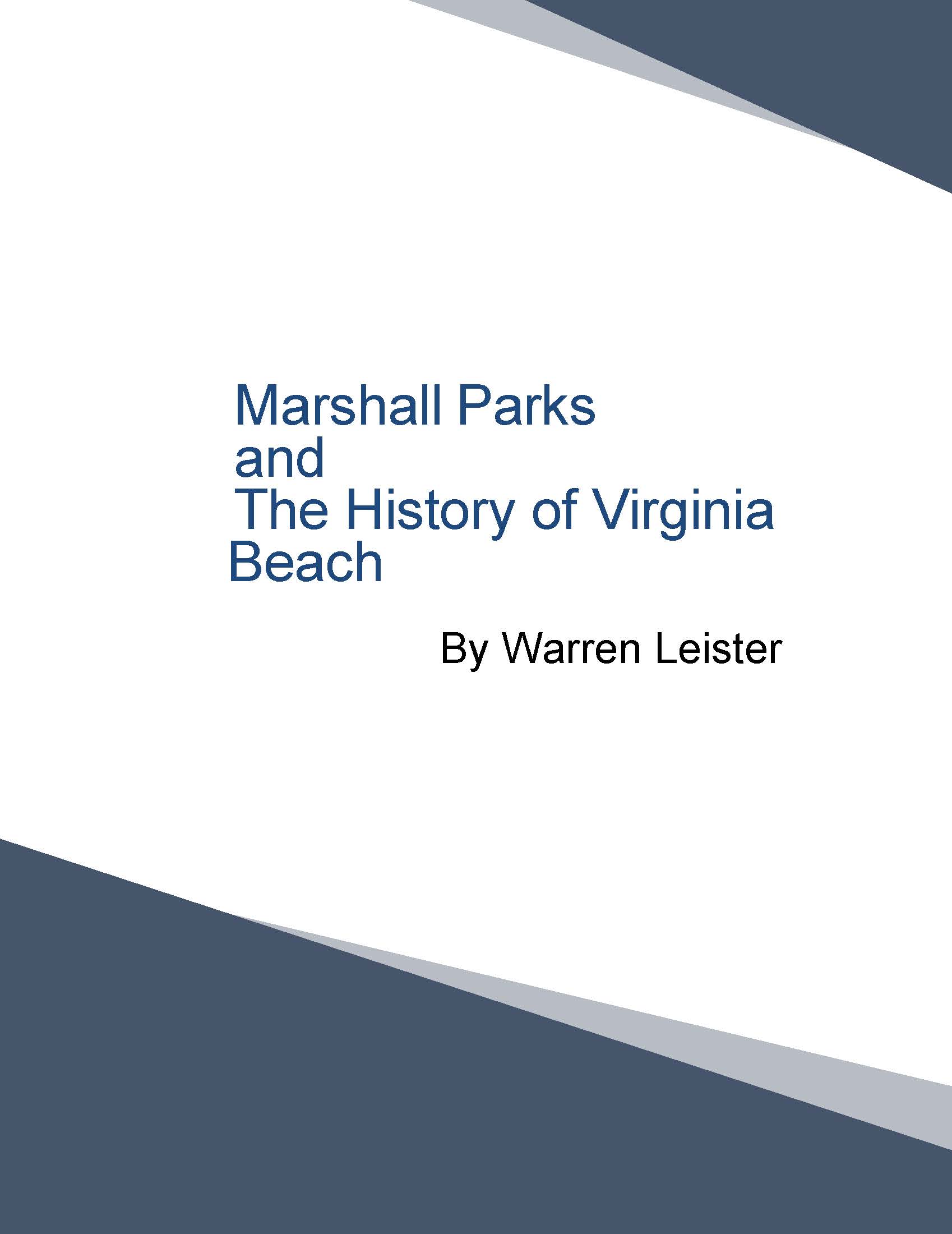
We have created and published a new historical document on the Birth of Virginia Beach. This has been written by our historian Warren Leister after researching the era and the people involved for several years. Excepts have been published here in our newsletter previously, but the information is now available all together in a 99 page document that you can purchase in our store. It factually explores the events, the dedicated people and the interesting culture in which they lived. Pick up your copy today!
The Model Railroad Museum of Hampton Roads is a fantastic community center based on running, operating and even building your own model railroads! There's something for every age here.
Learn about the real history of this area and how important it was in the building of America. Watch how railroads were built, the people involved, where America's roots were formed.
As they build their own railroads, students will be learning about science, electronics, architecture, technology, engineering, mathematics, and the art of 3 dimensional model landscaping. They can earn rewards for completing projects and winning contests.
Try to solve yardmaster problems on a switching layout like getting the lumber from the forest to the furniture store, by way of the saw mill and the lumber yard.
Run your train around blockades and other trains to get to the station on time without speeding or crashing.
Play railroad monopoly using model railroads. Winner is the one who can collect the most cars into his yard within an hour.
There will be programs for autistic and special needs kids, disabled adults and veterans.
School tours. Holiday Shows. Library and video rooms. Even youngsters will have their own wooden models to enjoy. There are classes and hands-on clinics for adults. Learn how to get started in the hobby. Or just enjoy the fun.
Everybody loves trains and this will prove it! Just click on the either the blue DONATE button below to make it happen...
PayPal Giving Fund:
No Credit Card Fees
OR...
Charitable Donations through PayPal, Credit or Debit cards:
(Opt in or out of paying credit card fees)
Get Updates and Special Offers in
the MRMHR Newsletter:
Making Tracks
Sign Up Here...
The official newsletter for the Model Railroad Museum of Hampton Roads

